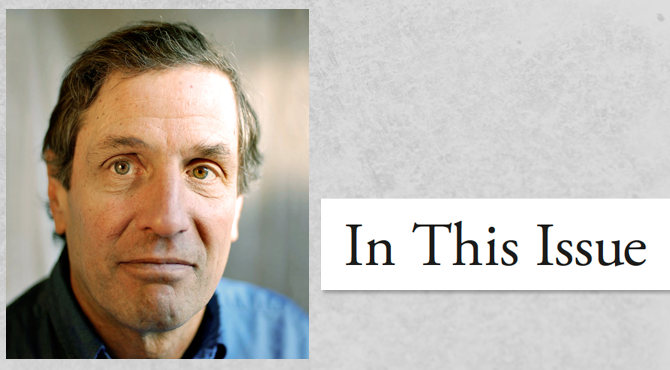
Don Cohen, Managing Editor
In his “From the Academy Director” column, Ed Hoffman argues that political and social skills are essential to carrying out ambitious projects. “Politics” often has a negative connotation; “playing politics” suggests doing or saying anything for personal or party advantage while pretending to act on principle. But Otto von Bismarck called politics “the art of the possible,” and Hoffman would agree. Political skill involves understanding where power and influence reside and knowing how to gain the support of those powerful and influential individuals and groups. Those abilities can be used for unworthy purposes, of course, but they are also necessary to achieve valuable goals, like launching a new telescope that will help us understand the origins of the universe.
Or cooperatively building a space station used for technological and scientific research by the space agencies of the United States, Europe, Japan, Canada, and Russia. In “The Challenge of Cooperation,” Lyn Wigbels recalls the long negotiations that turned a distant possibility into an international project. Understanding and respecting the varied needs and concerns of all the governments and agencies involved required significant political skill. Keith Woodman and Paul Krasa’s “Is Your Project Viable?” is also partly a story about political skill, since it identifies understanding and adapting to changes in the environment outside the project as essential to project survival. Political awareness (for instance, recognizing the limits of financial support) is important.
The social skills Hoffman discusses have a political dimension—connecting with people to gain their support—but social skills are also needed to acquire the technical and procedural knowledge that difficult projects demand. “Knowledge Topics: A Vital Project Resource” considers the role of social capital in project success. The personal networks of trusted colleagues that team members go to for help and advice—their social capital—give them access to expertise that cannot be readily acquired in any other way. Knowledge, especially subtle, experiential knowledge, can be most effectively shared by people who have a relationship characterized by trust and mutual understanding. That is why this article is the first in a series of “Knowledge Topics” we will feature in ASK: articles that focus specifically on how knowledge is developed and shared.
In “The People Behind the NASA Engineering Network,” Manson Yew illustrates this social-capital principle, showing how the agency’s online engineering communities thrive when their members connect in a variety of ways, including in face-to-face meetings that build relationships that make effective electronic exchanges possible.
Virtually every NASA story is at least in part a story of trust-based collaboration. Helen-Nicole Kostis describes how colleagues help one another in the open environment of the Scientific Visualization Studio in “Scientific Visualization: Where Art Meets Science and Technology.” And “The Sky Crane Solution” tells the story of the massive collaboration necessary to solve the problem of landing the Mars Science Laboratory. In Rob Manning’s opinion, “Only Apollo and shuttle have brought NASA together to this extent.”
“Kepler: The Long Road to Other Worlds” shows the knowledge, social and political skill, and persistence sometimes needed to carry out a mission successfully. Scientists literally spent decades developing technologies, overcoming rejection, and winning the support of skeptics to build and launch the telescope now discovering planets orbiting distant stars.
More Articles by Don Cohen
- In This Issue (ASK 46)
- Interview with Lisa May (ASK 46)
- In This Issue (ASK 45)
- In This Issue (ASK 44)
- In This Issue (ASK 43)
- View More Articles








